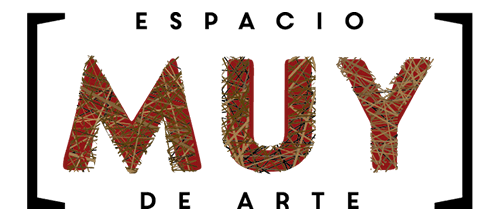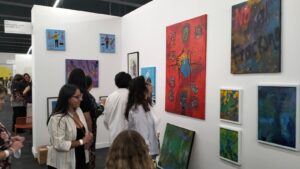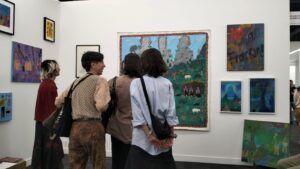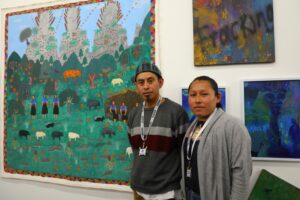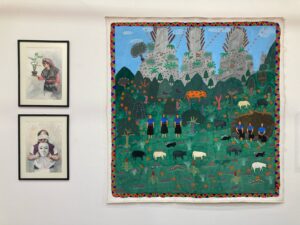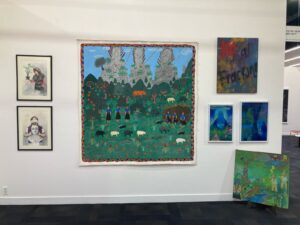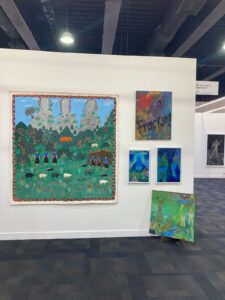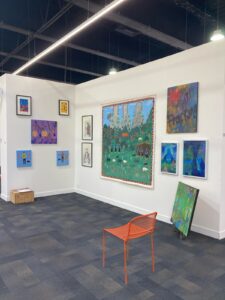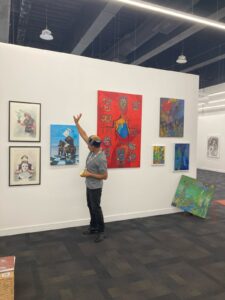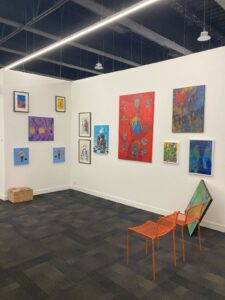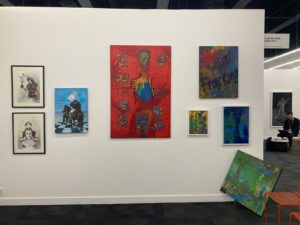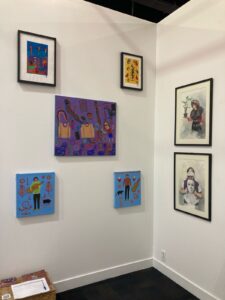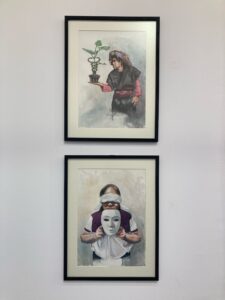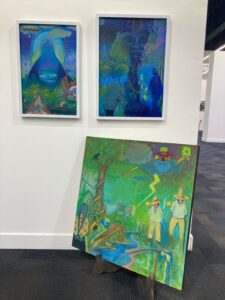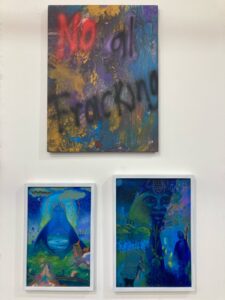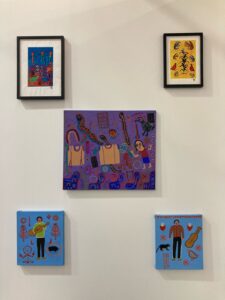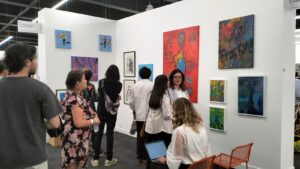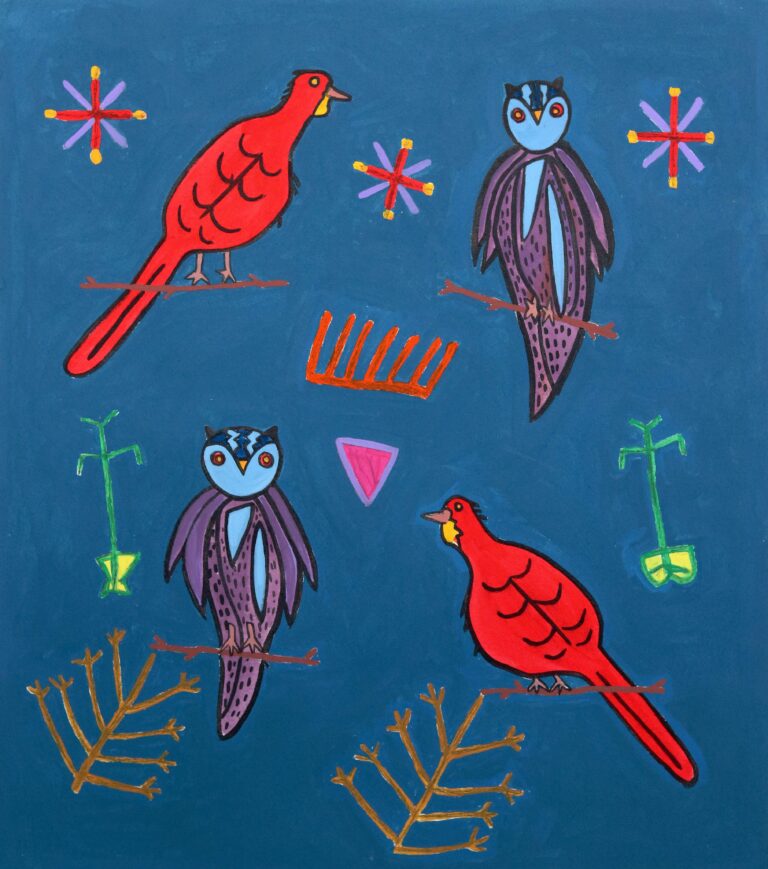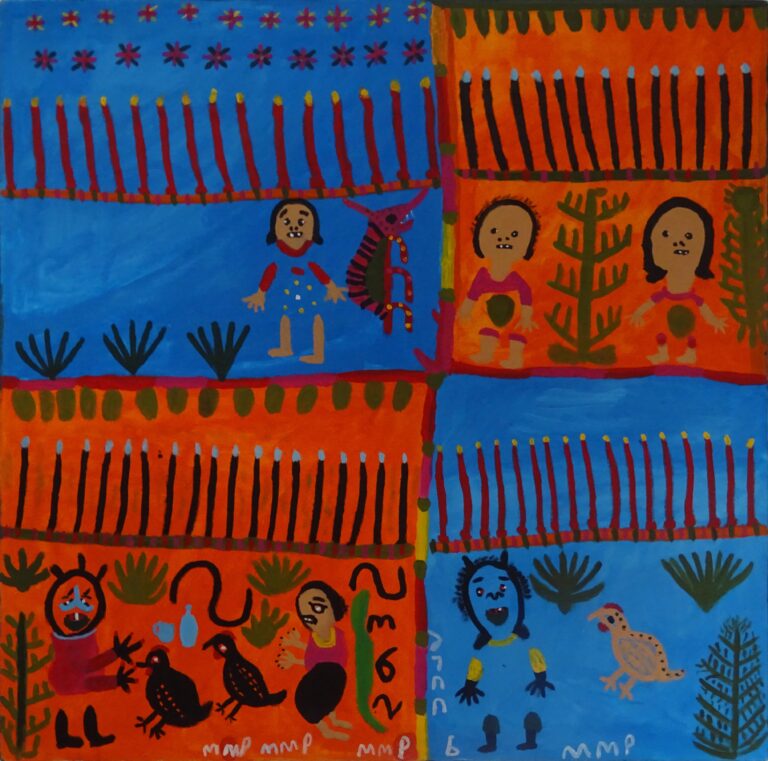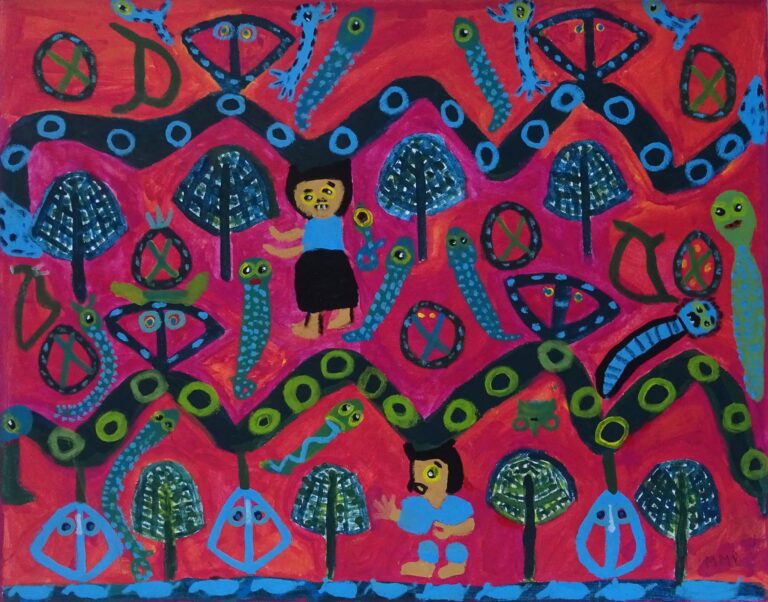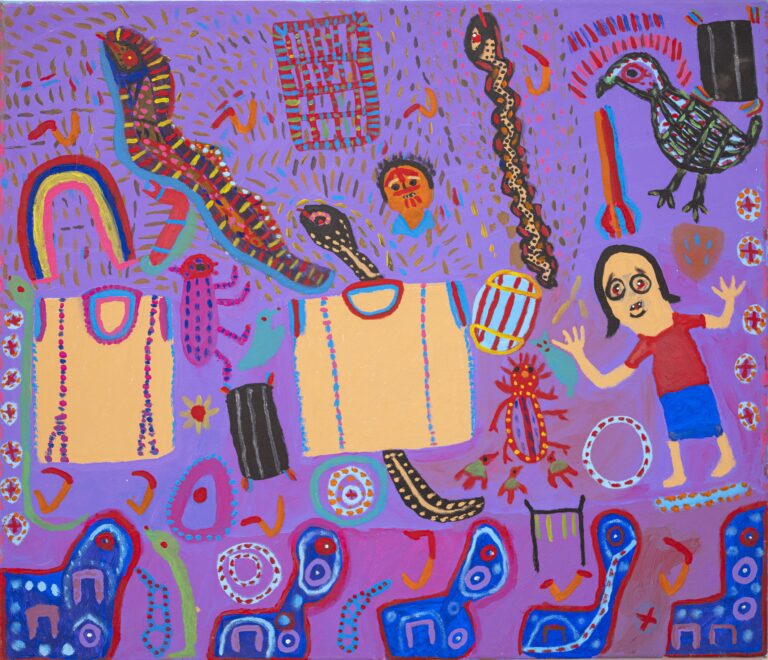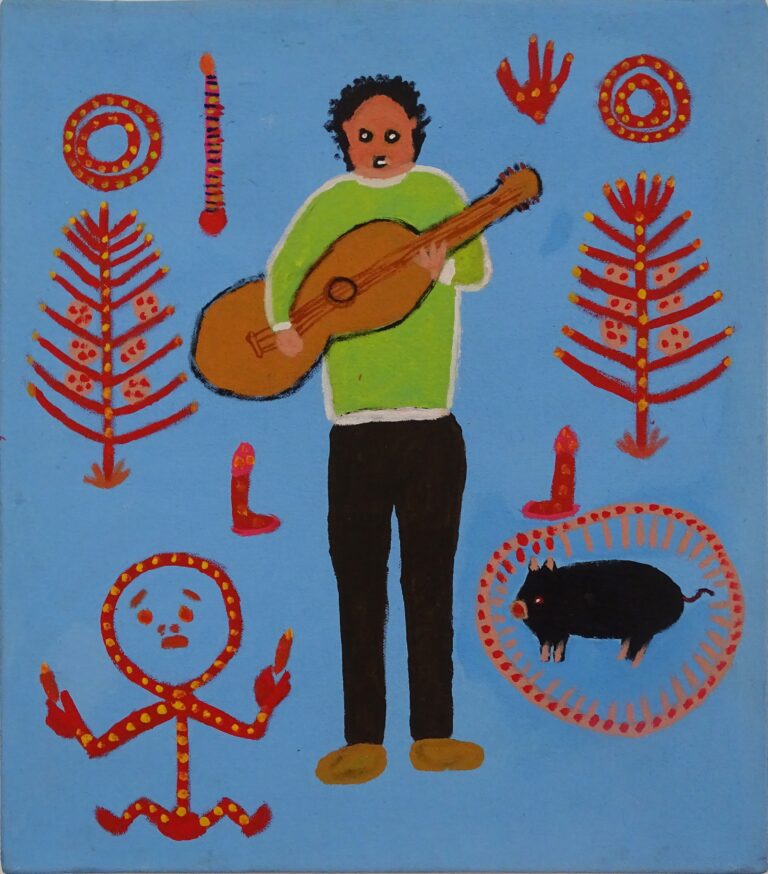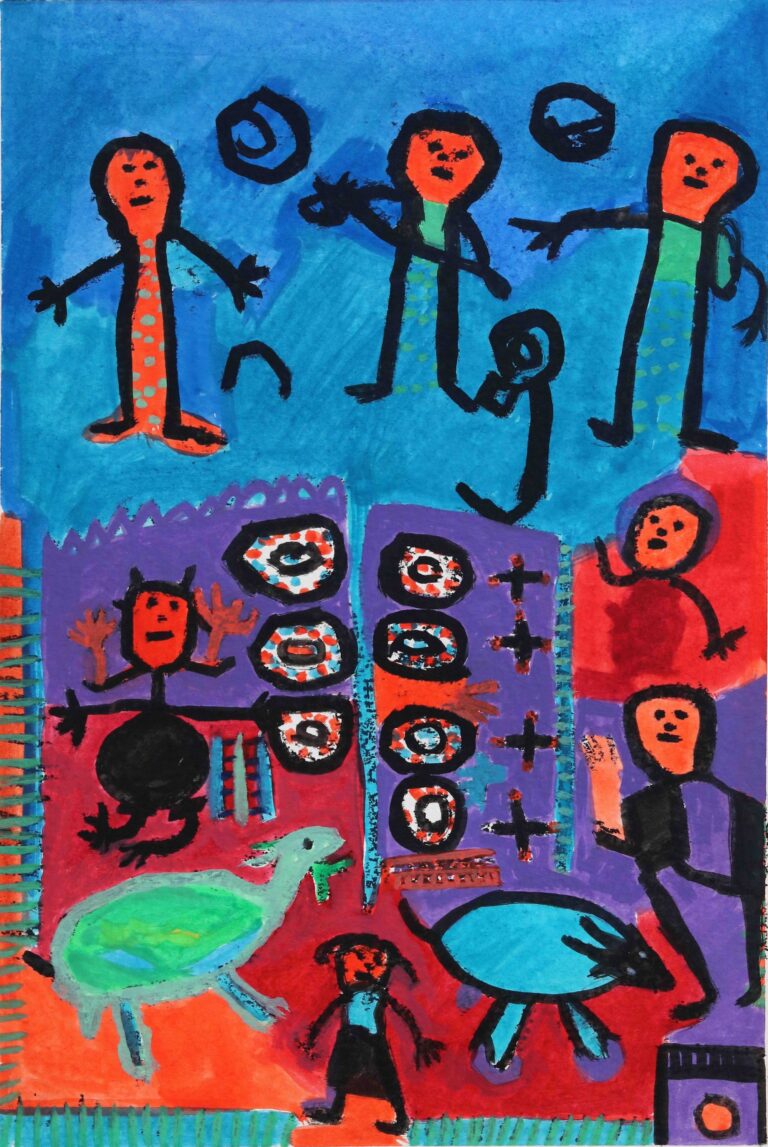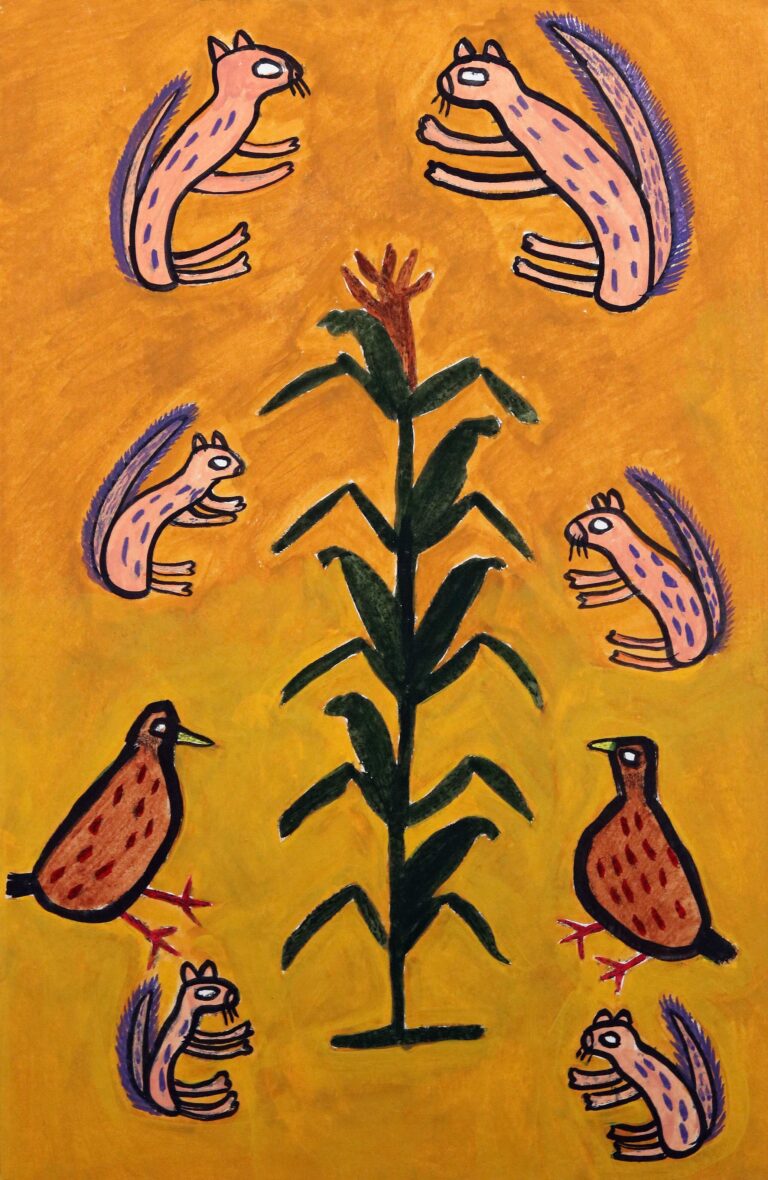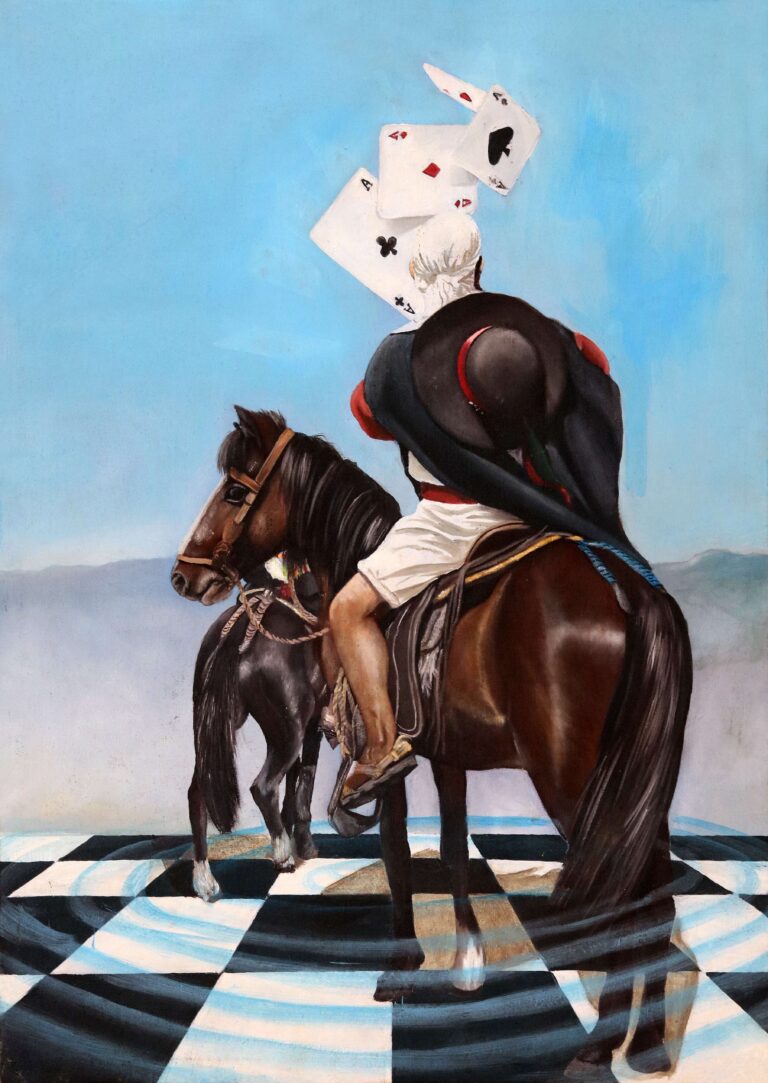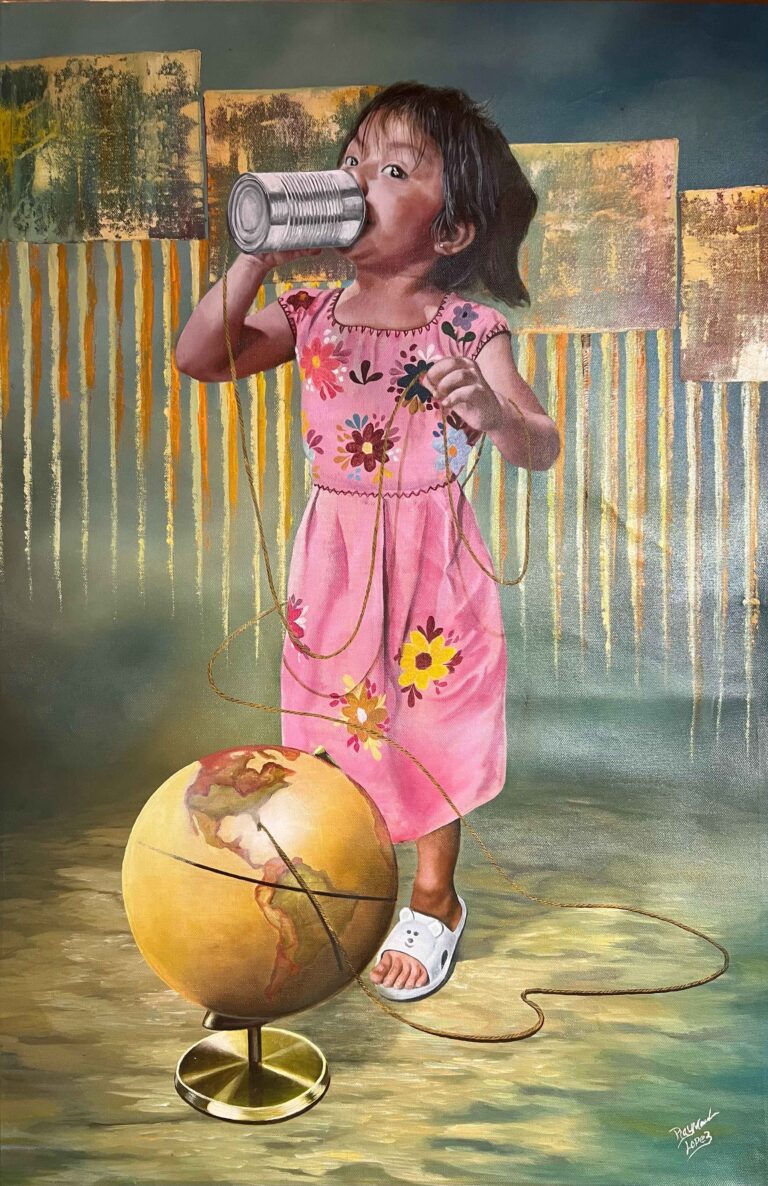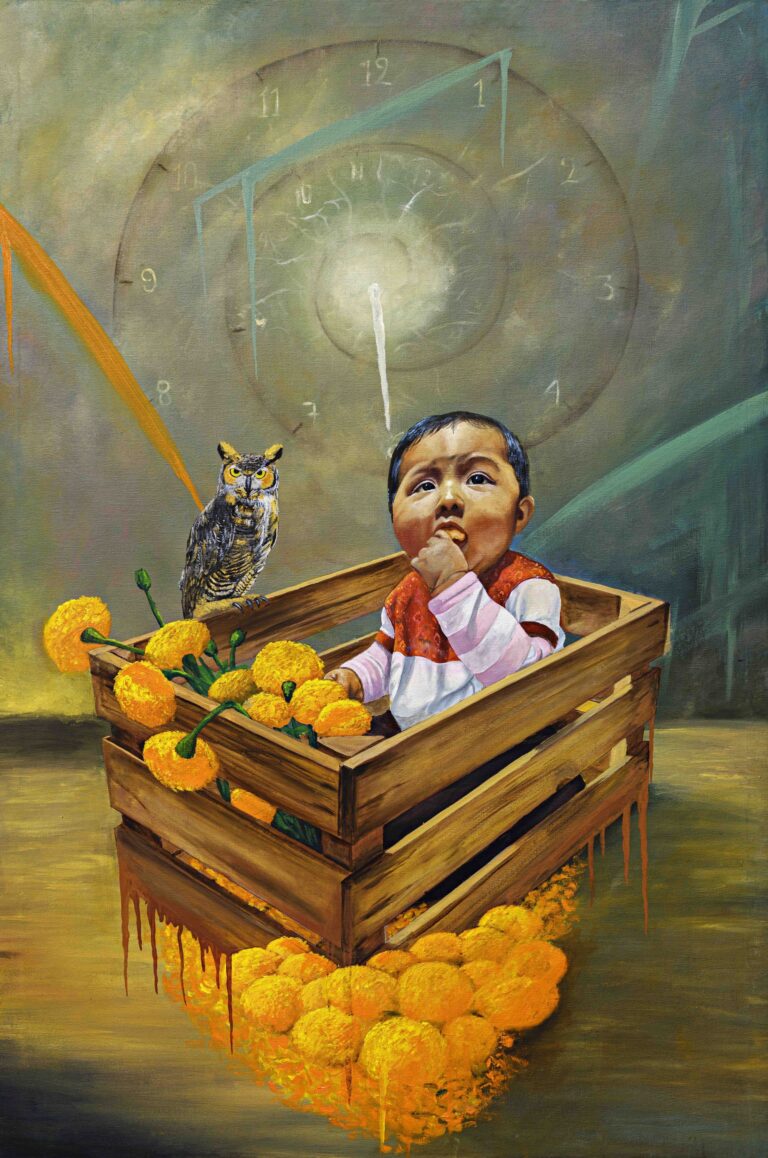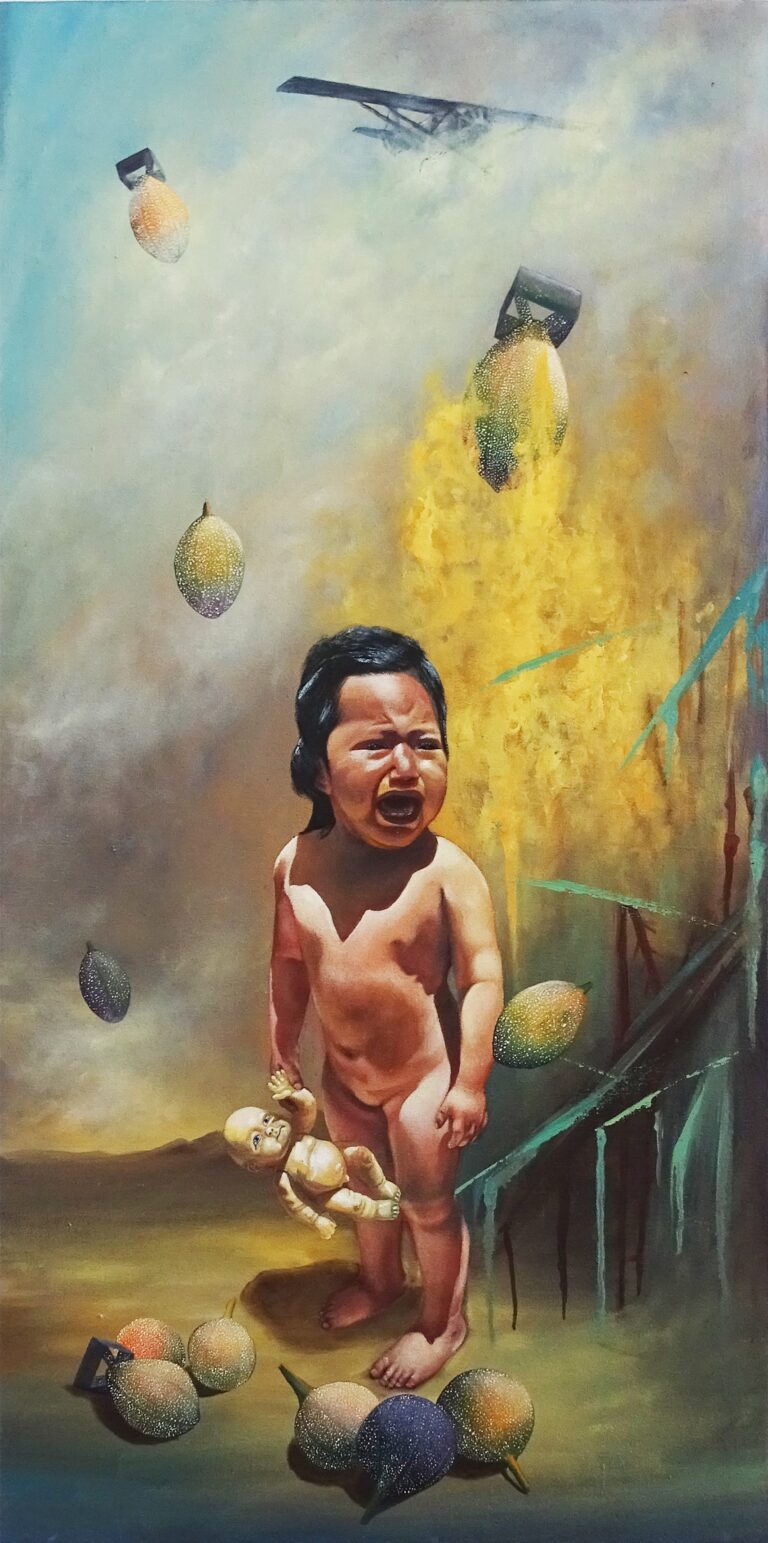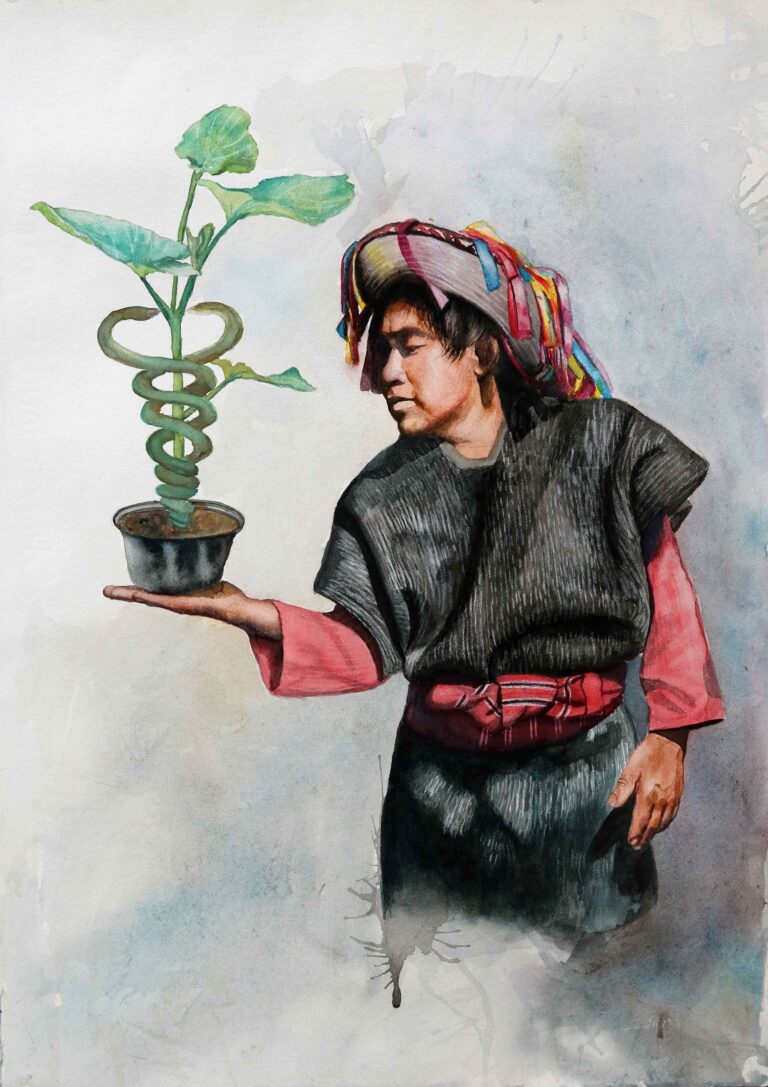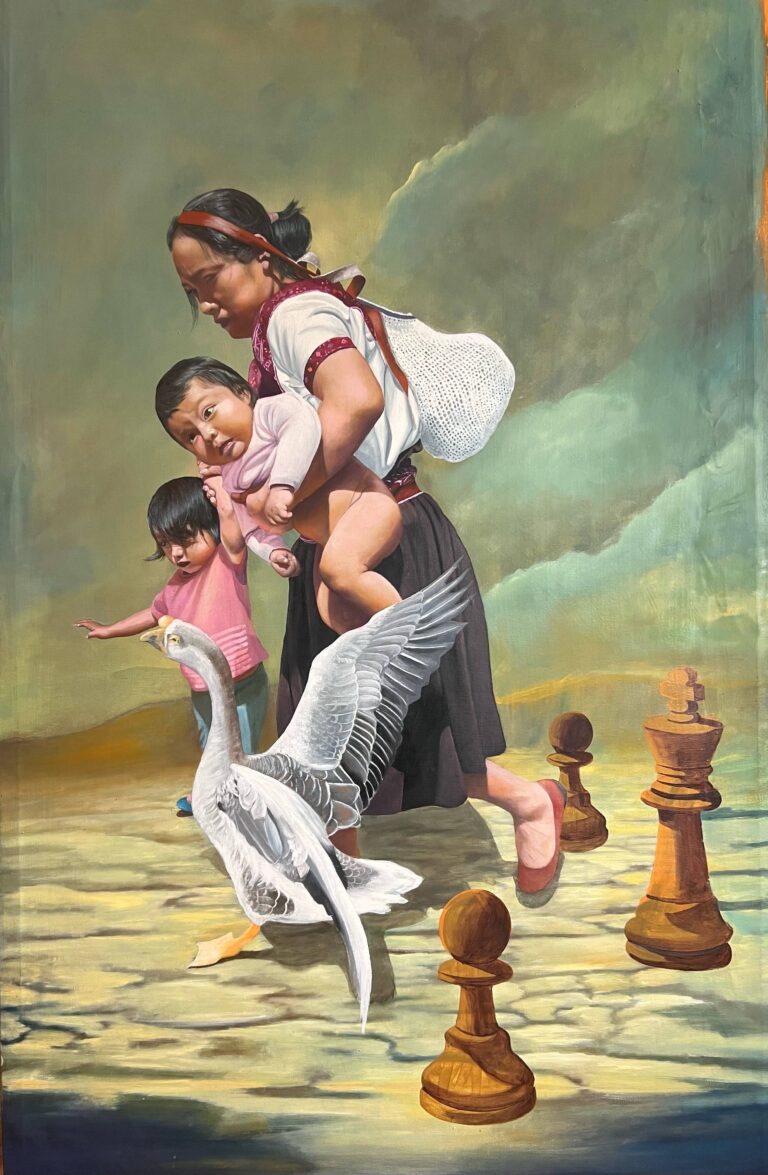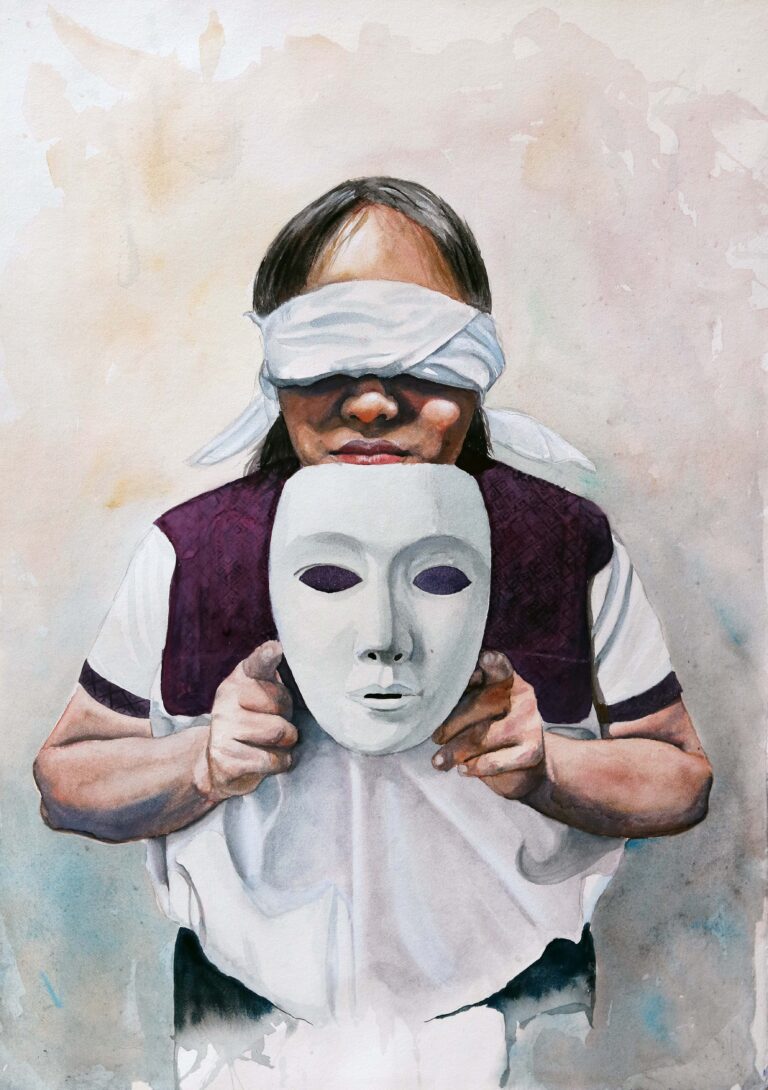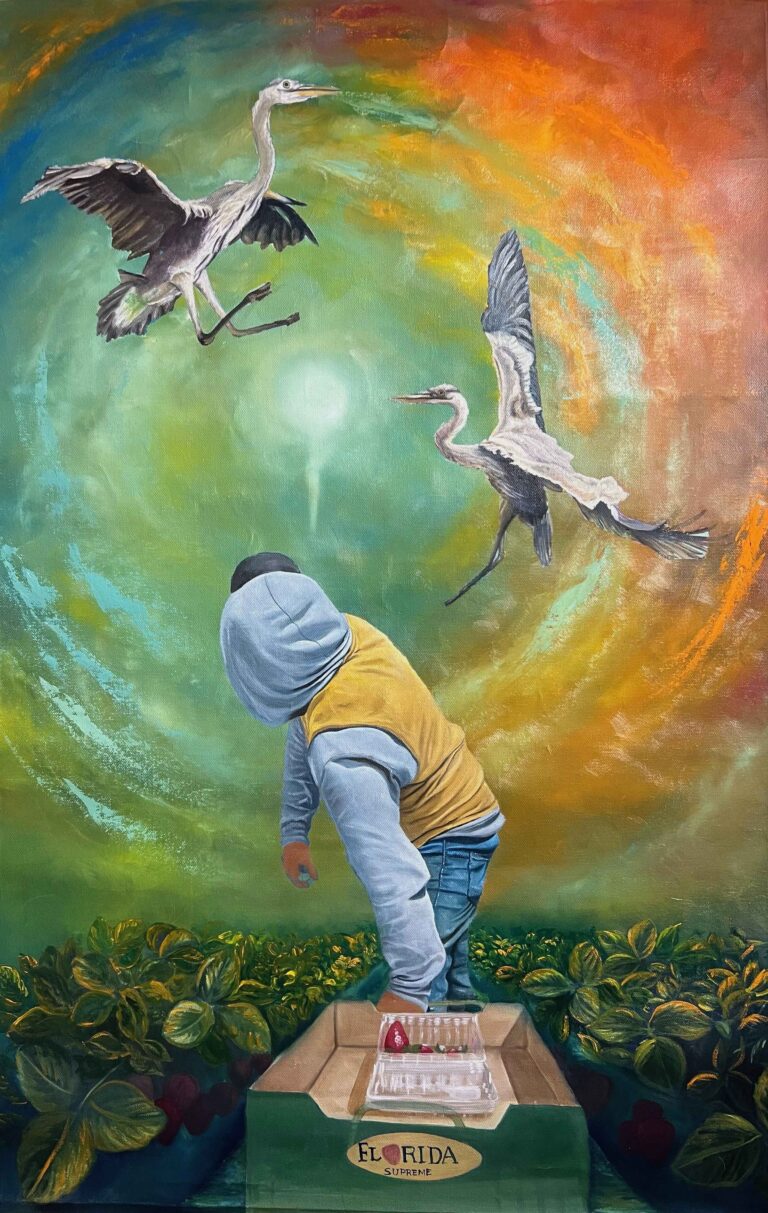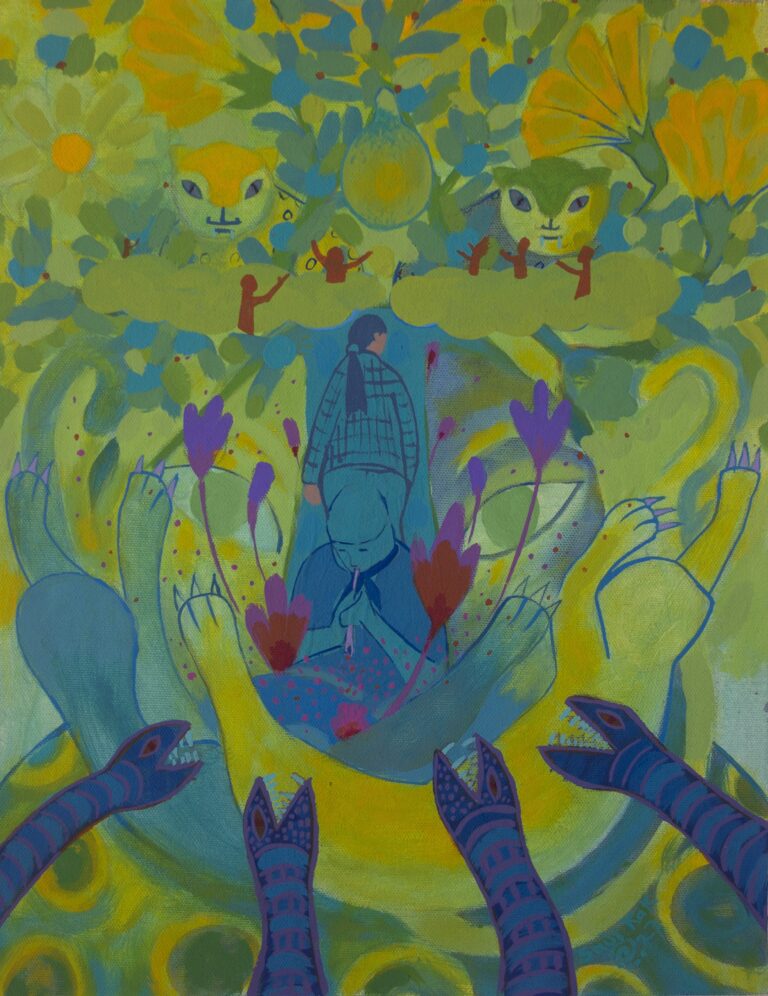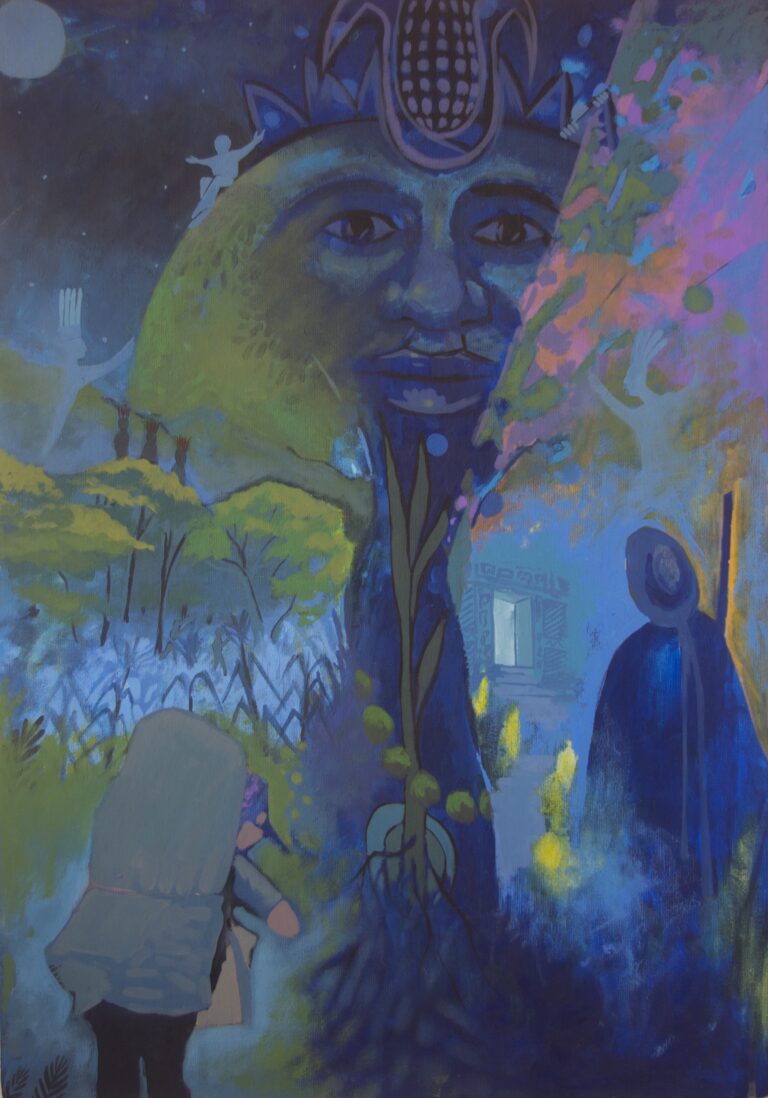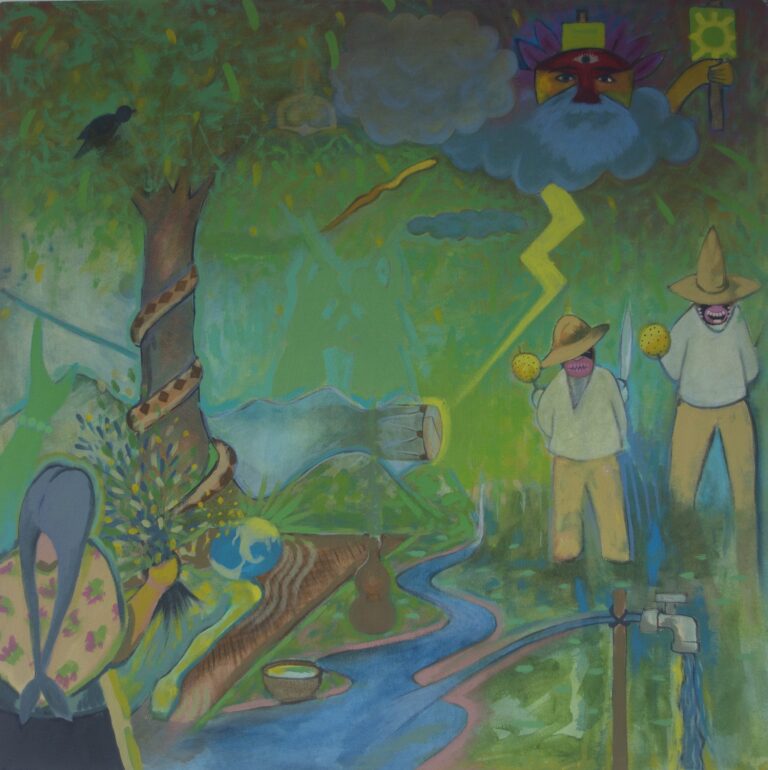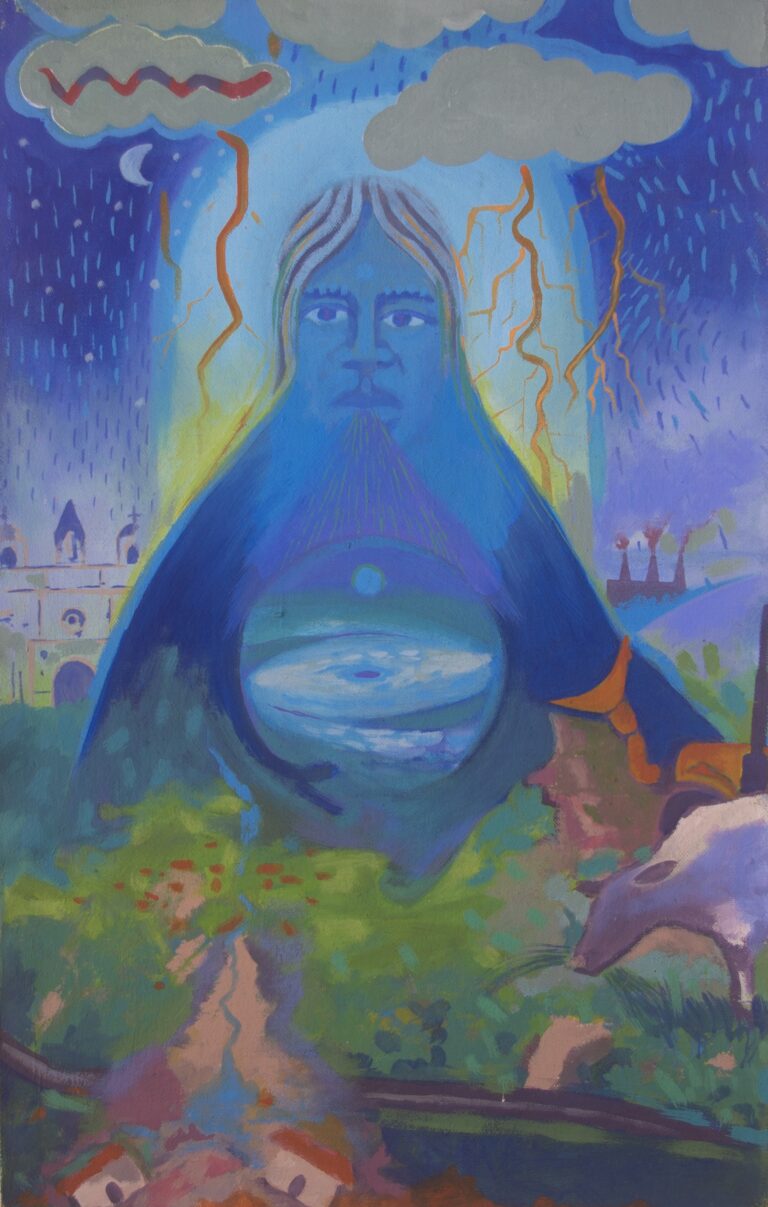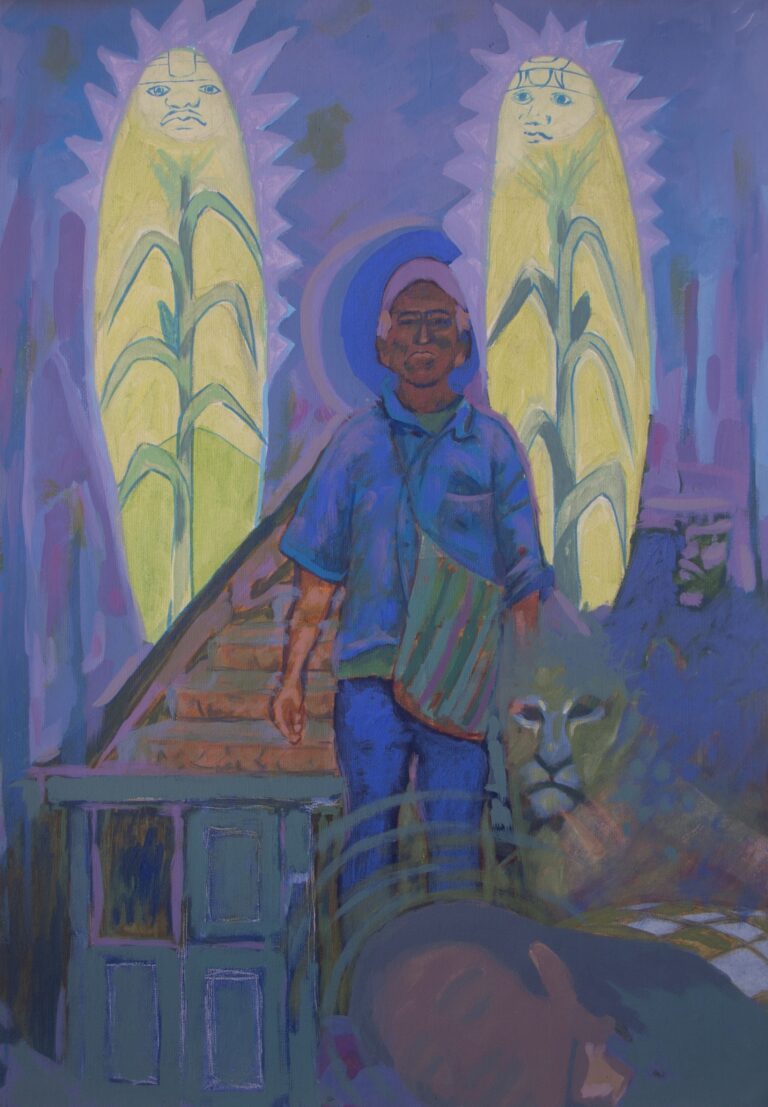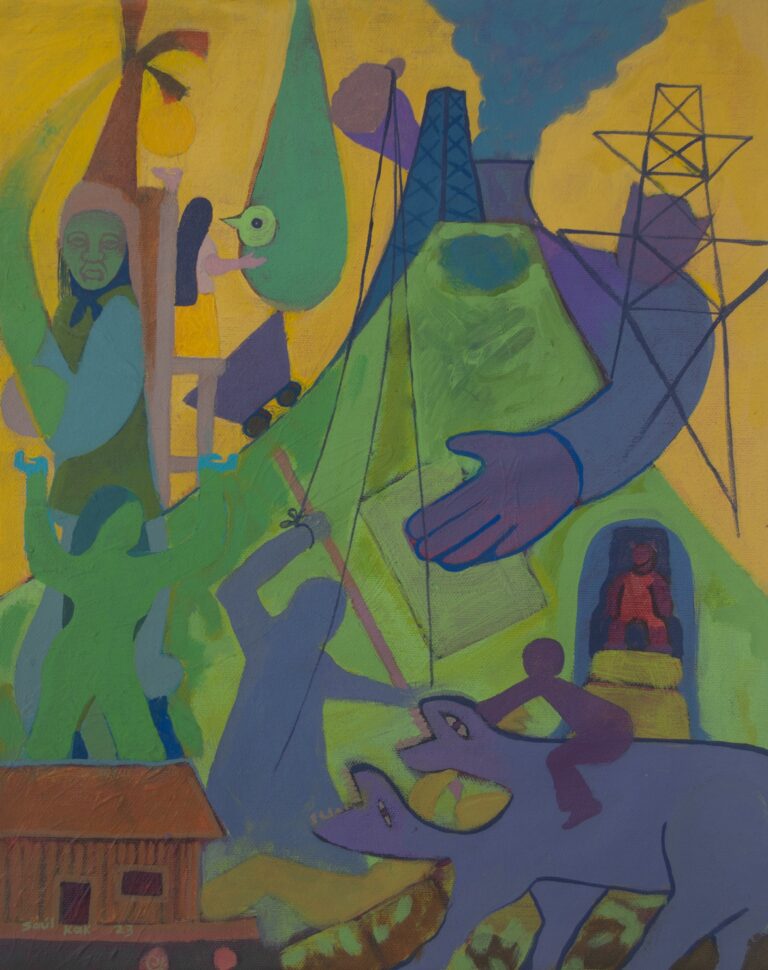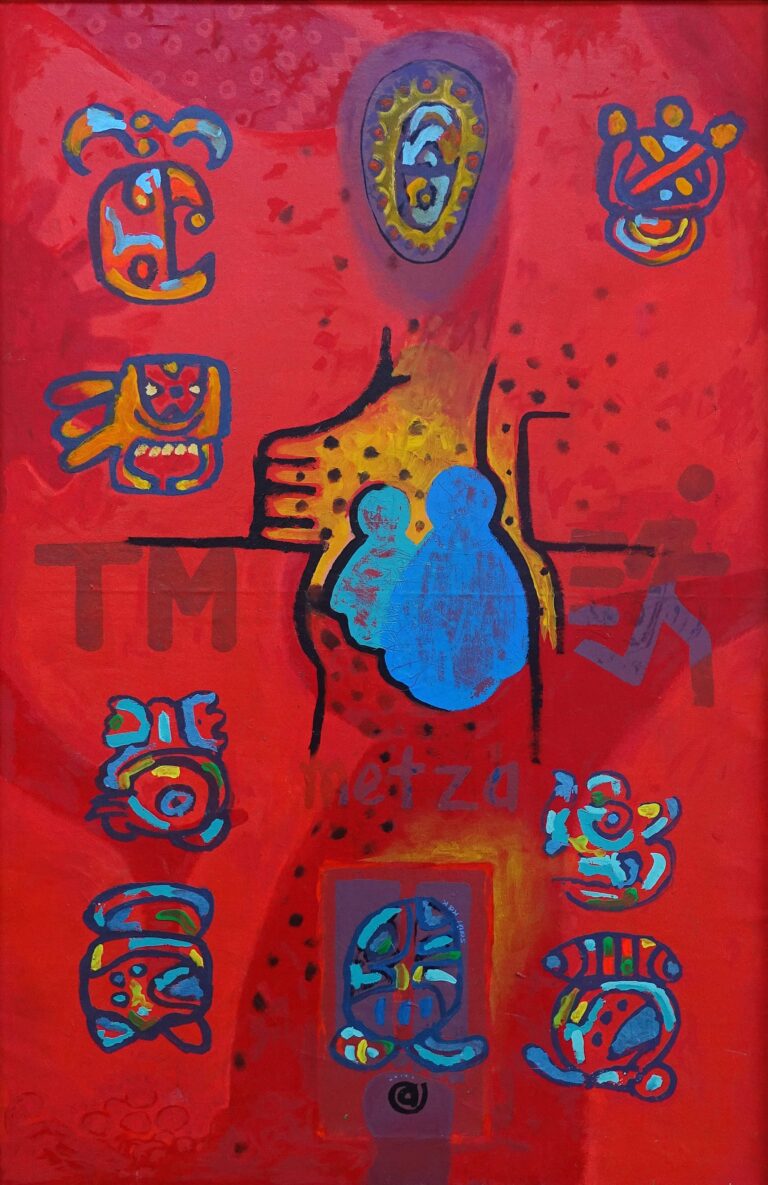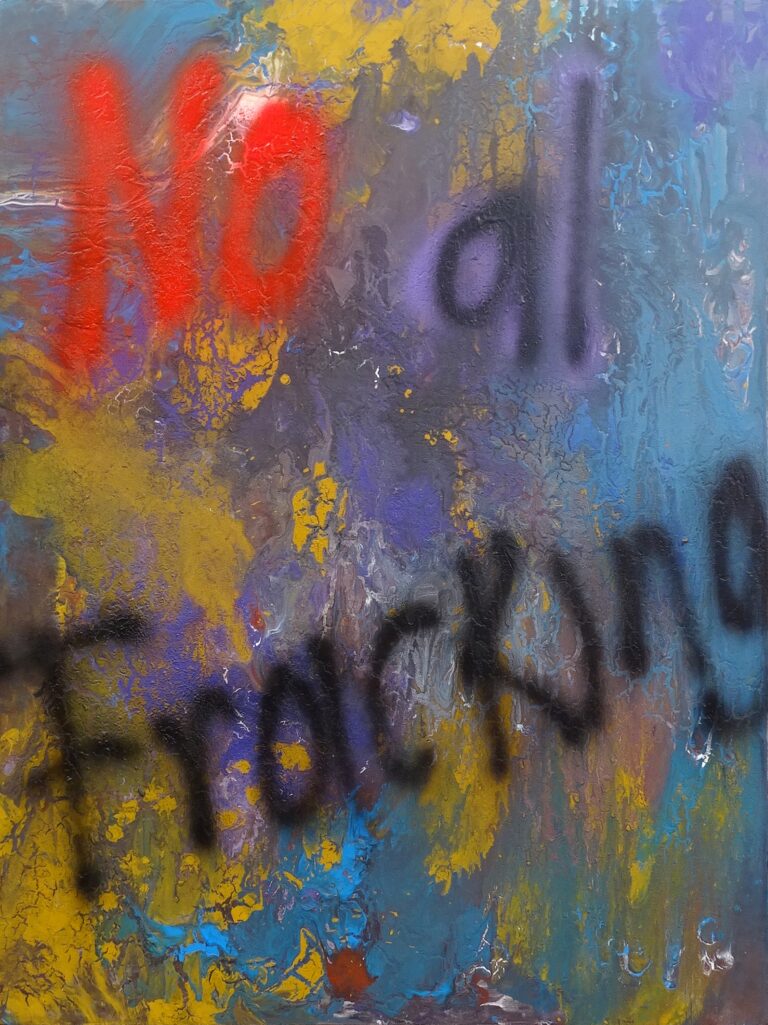Three master Maya and Zoque artists from Chiapas, Mexico
MUY Gallery proudly presents three master painters: Maruch Méndez, Saúl Kak, and Raymundo López. Saúl is a Zoque speaker, while Maruch and Raymundo are speakers of Tsotsil. Their work explores the deep roots of their indigenous cultures, through constant reinvention, in defense of their territory and autonomy.
Raymundo López (born in 1988 in San Andrés, Chiapas, now fieldworker and painting in Florida, USA), with a formidable realism, deconstructs Tsotsil village life with brave nostalgia and points an ironic finger at employer/e neocolonialisms in the lap of opportunity/disillusion. His is a jocular-serious certainty of eventual Maya survival.
Saúl Kak (1985, Zoque speaker), filmmaker, experimenter in audio and digital art and inveterate and passionate painter, scours the narratives told to him by his tradition-imbued parents to give form and power to his people’s territorial claims and defense. In the series shown at Material Art Fair, Kak’s play of aquamarines (there is one word in Zoque covering blue-green on the spectrum) reflects the fact that part of Zoque territory was immersed in water when commandeered for making the Chicoasén dam in 1974.
Maruch Méndez (1957, monolingual Tsotsil speaker) took up contemporary visual art upon joining the MUY artists’ community almost a decade ago. With a legendary background in Chamula embroidery, shepherding, adoptive parenthood, traditional prayer and curing, and now religious cargo-holder with deep historic-cosmological knowledge, Maruch’s paintings have been singled out in national and international museum shows in recent years. In Material Art Fair, Méndez presents a series of hand painted engravings, based on interactions between humans and earth deities in quasi-historical narratives directing us to proper action and Maya eudaimonia (good life).
GaleMUY, the MUY Gallery and cultural center, is devoted to artistic expression in contemporary media and exploration of Maya and Zoque peoples of Chiapas, Mexico. MUY was founded in 2014, in San Cristóbal de las Casas, as a free-flowing productive and exhibition space for more than 13 young and mid-career creators to use their own cultures (Tseltal, Tsotsil, Lacandón Maya, Zoque, etc.) and self-taught styles in painting, sculpture, photography, videoart and performance, to portray and reflect on change and constancy, resistance and resilience: the reality of Indigenous life in the globalized village. Gender freedom, spiritual ecology, regard and repurposing of the aesthetic of Classic Maya grandeur to reflect on territories – of land and culture – defended and (especially given migration) recast.
Artworks
Birds | Maruch Méndez
mixed media: hand painted on engraving, on paper
39.7 x 35.2 cm
10 prints
2023
“Birds are often the messengers of the gods. They can bring good tiding and they can forewarn of danger or even of pending death. It depends on the type of bird and how she appears and calls. Not everyone pays a mind to these omens. I have learned to respect.”
Happy family | Maruch Méndez
Photograph of painted image on archival-quality paper, signed
51 x 40.4 cm
2023
“There was a man who was very poor, without a home or money. However, he met a young woman who married him. From there, they gradually began to prosper. The man was able to buy land, build a house, and purchase a car. Their daughter was born, and she turned out to be very intelligent, even more so than her parents. The land they acquired was very fertile, allowing any plant they sowed to thrive.”
Jsut’ubi (Torbellino) | Maruch Méndez
Acrylic on canvas
60 x 70 cm
2018
“This is a place called Xila Ton, where a whirlwind was born, resembling a large snake. Nearby, it passed through a house plot, picking up all the clothes. The woman living there started screaming, and then the girl saw a vulture. She kindly asked the vulture to return her clothes, but it ignored her. Later, a beetle appeared, and the girl made the same request. The beetle complied, and the whirlwind returned to the place where it originated, bringing back all the clothes to the girl’s house.
In the area, many women had gathered because what they witnessed was not normal. They sought a healer to prevent any harm. The healer used smoke, burning honey and incense. S/he kept the clothes for three days, and told the girl to stay there. The healer suggested this incident might be a bad omen. However, the girl dreamt that it was not something bad but a stroke of good luck. She was told she would be given a job and become a healer. Now, she goes about healing, and can even cure sick sheep and horses. The girl is paid well for her healing abilities, whether it’s for people or animals. The medicines she uses include bankilal (wild tobacco), lime, and garlic.”
Oy jun vinik bat ta camposanto (The man who went to the cemetery) | Maruch Méndez
Mixed media: hand painted on engraving, on paper
29.5 x 19.5 cm
10 prints
2023
“There was a man who went to the cemetery, leaving his pants and shirt behind, and transformed into a goat. He then went to the house of a sick boy, leaped up to enter while the boy’s family slept, and drained the blood from the sick person until he died. He put the blood in a bottle and delivered it to the owner of the cemetery (the Devil). Later, he teamed up with a friend who learned everything from the goat-man, and together they treated a sick girl. However, the first man had malicious intentions, and the friend ended up alerting the girl’s family. They vanquished that devil, and the girl recovered.”
The cornfield | Maruch Méndez
Mixed media: hand painted on engraving, on paper
30 x 20 cm
10 prints
2023
“Thids refers back to a time when I specifically planted. In fact, it was an unlucky day. And even though the corn grew, it didn’t turn out well. Just like in childbirth, if it’s not a good day, we don’t grow well. But if the day of our birth is good, we will reach an advanced age. It’s the same with corn. We plant, take care of the cornfield, but if it was an unfortunate day, well, God intervenes, and squirrels, birds eat the cornflower, or the corn when it’s too tender.
If there’s a lot of corn, and it’s a good day, and if it’s close to the villages, then animals won’t enter the cornfield. If the day is good, the cornfield thrives.”
Three women | Maruch Méndez
Acrylic on canvas
1.80 x 173.2 cm
2021
“Here, we depict three young women coming to where they go to graze their sheep, glad to find good pastureland. These three young women always sat on a wavy rock. Every time they went to graze their sheep, they sat in that spot. Months passed, and they continued to stay there. However, they were unaware that this place was a water source for animals such as the tiger, fox, badger, armadillo, and squirrel. Since the women arrived very early and left very late, the tiger would pace around endlessly, wanting to drink water, but it couldn’t because the women were there.
This jaguar, feeling thirsty, asked the snakes to go scare the girls. When the snakes arrived where the girls were sitting, the girls were not frightened. They said they had only come to rest on the rocks. Above, there were three streams, and the owner of the stream [a deity] shouted loudly, “Girls, something is going to happen to the three of you, something will occur in your lives.” They paid no attention and didn’t take what they heard seriously.
The next day, they went to graze and sat in the same spot. Suddenly, they disappeared in the blink of an eye; they turned into very large rocks. Previously, they had sat there all day, but now, their punishment was to stand there all the time, transformed into giant rocks. Their parents cried and cried because they searched for their daughters everywhere but never found them. The girls were punished because they caused suffering to the creatures of nature by blocking the place where they drank water.“
Clamor and Prayer | Raymundo López
Oil on paper
67.5 x 48 cm
2019
“Playing cards have a connection with the indigenous culture of San Andrés as when, in “the cornfield ritual,” we read the cards so:
- Heart: the church or religion
- Diamond: money, construction, or economy
- Spade: struggle
- Club: harvest or agriculture
For example in 2017 the church in the central plaza was damaged due to an earthquake. There had been struggles and divisions in the community, but when harm came to the church, everyone pitched in!.”
Communicating | Raymundo López
Oil on canvas
53.5 x 83.5 cm
2023
“This work depicts the children of folks who work illegally in the United States. It is not easy to cross the border. So, the children even when they’re playing, are always seeking to know how their parents are, what they are doing, what are their achievements, and so on. In other words, they share, sort of, in the most important events, while their parents are not with them. I mention parents because there are also working mothers who leave their children to work for a better future for their family.”
Omen | Raymundo López
Oil on canvas
90 x 60 cm
2019
“I remember the troubles of my childhood, with the other children hiding out in Aldama. We would play around, but many fell ill, and since we were all together, there was no hygiene. Every night the owl would come and start scratching the walls, perhaps knowing that a child was going to die. I placed the owl in this painting as it symbolizes death, and the clock that announced that the time had come. Children got sick [as families fled the army during the first phase of the Zapatista rebellion] and some died when there was no one to take care of them.”
Pomegranates | Raymundo López
Oil on canvas
100 x 50 cm
2019
“In 1994, when the conflict began, we were taking refuge in a house. While we were playing, we would see planes in the sky dropping bombs, but they mostly aiming nearby. One day, I asked my sister what those things were that the planes were dropping. She replied that they were “little grenades.” It scared me a lot, and from then on, I developed a fear of pamegranats because I thought they were the ones dropped by planes. I was very scared. My sister, while playing, would throw one at me, and I would start crying.”
Sacred Pepper | Raymundo López
Watercolor on cotton paper
35 x 50 cm
2020
“Due to the difficulties of buying medicines, people search for medicinal plants. One of these is the mumo (sacred pepper) leaf. In my community, this leaf is considered a remedy for Covid and many other ailments, and for many individuals it holds a sacred significance, too.”
The goose | Raymundo López
Oil on canvas
110 x 69.5 cm
2020
“
This work is inspired by a memory from 1994 [time of an Indian uprising]. My mom rushed us away as my father was one of the leaders. The military then entered our house, and we sought refuge in Aldama in a makeshift camp. That’s why the chickens and geese were left behind.”
The mask | Raymundo López
Watercolor on cotton paper
35 x 50 cm
2020
“Here I portray invisible enemies (in part due to our own difficulties in seeing hard truths). For example, in San Andrés and other places many people didn’t believe in the pandemic even when people passed. It was said that it was just a government ploy. That’s like when there are elections and we also see what we want, believe even when it’s a ploy. In my opinion, this disbelief arises because it is something we cannot see; it’s an invisible enemy. In this work, that concept is what I aim to represent.”
The stork will eat you | Raymundo López
Oil on canvas
53.5 x 83.5
2023
“This image represents the constant struggle undertaken by individuals who migrate to another country, whether legally or illegally. Strawberry picking is one of the jobs that significantly contributes to the economic improvement of our Mexican compatriots, as well as workers from other countries who come to seek a better future by working in the United States. The saying “te va a comer la garza” (the heron is going to eat you) is directed at those who are slow or beginners in strawberry picking work. It’s a way to encourage them to pick up the pace and adapt to the job, implying that if they don’t work faster, they’ll fall behind.”
All is not lost, there’s hope | Saúl Kak
Acrylic on canvas
29.5 x 37.8 cm
2023
“In this work I painted a woman, much like in life where often we don’t know where to go, feeling confused and lacking clarity, making mistakes along the way. We’re aware that there are people who speak ill of us, envy exists, and our lives can be muddled by confusion. However, despite all this, if we invoke the deities of the mountains, they can help us find a good path and provide hope for our personal future.”
Entering the Other World, known as 20 Houses | Saúl Kak
Acrylic on canvas
58.5 x 41 cm
2023
“According to Zoque tradition, there is a sacred place where we must go to declare before our ancestors our actions in earthly life. We enter this place, called 20 Houses, at two different times: one is temporal, through our dreams, and the other is eternal when we bid farewell to our life on earth. It is through dreams, too, that, the ancestors bestow upon us gifts that we will share in our community and in our life.”
Healing the Earth | Saúl Kak
Acrylic on canvas
70 x 70 cm
2023
“Currently, we experience many conflicts of different types in the world, which have affected our societies and our natural resources. Offerings are made with reed music, drumming, and dances for the goddess Näwayomo to bless and irrigate the sacred land with new and blessed water. The women (healers and midwives, or oko) pray, sing, and heal this suffering land.”
Hurricane Eta | Saúl Kak
Acrylic on canvas
35.7 x 53.3 cm
2023
“In 2020, Hurricane Eta struck the Zoque region. It caused severe damage to the area and resulted in loss of human lives. This event prompted the Zoque population to mobilize and reflect on human actions in relation to Mother Earth. In an assembly held on December 6, it was agreed to conduct an offering at the Acambak River in Chapultenago, Chiapas, to seek the forgiveness of Näwayomo for human actions on a global scale.”
Jalai (Father) | Saúl Kak
Acrylic on canvas
58.5 x 41 cm
2023
“It is as a traditional peasant that our guardian comes to us; he is our guardian, along with the jaguar spirit. Our ancestors Mojk-mama (Mother corn, on the right) and Mojk-jara (Father corn, on the left) also accompany us; they are the ones who watch over us during our earthly life. (A newborn, for example, sleeps with two corncobs on either side to protect it from evil spirits).”
Metza (Two) | Saúl Kak
Acrylic on canvas
146 x 96 cm
2010
“Here I portray the jaguar, but you can also see the silhouette of a pregnancy with two people inside, symbolizing life, accompanied by Mayan symbols. “Metza” means “two” in Zoque. I painted this, referring to my wife and myself, when we were awaiting my first child.”
No to fracking | Saúl Kak
Acrylic on canvas
80 x 60 cm
2018
“I saw this on the wall of a house in Zoque country, on which the message was written: “No to fracking.” Fracking is a drilling technique used for hydrocarbon extraction that consumes large amounts of water and hurts the ground and causes pollution. The color combination in the painting represents the wealth lying beneath our feet.”
